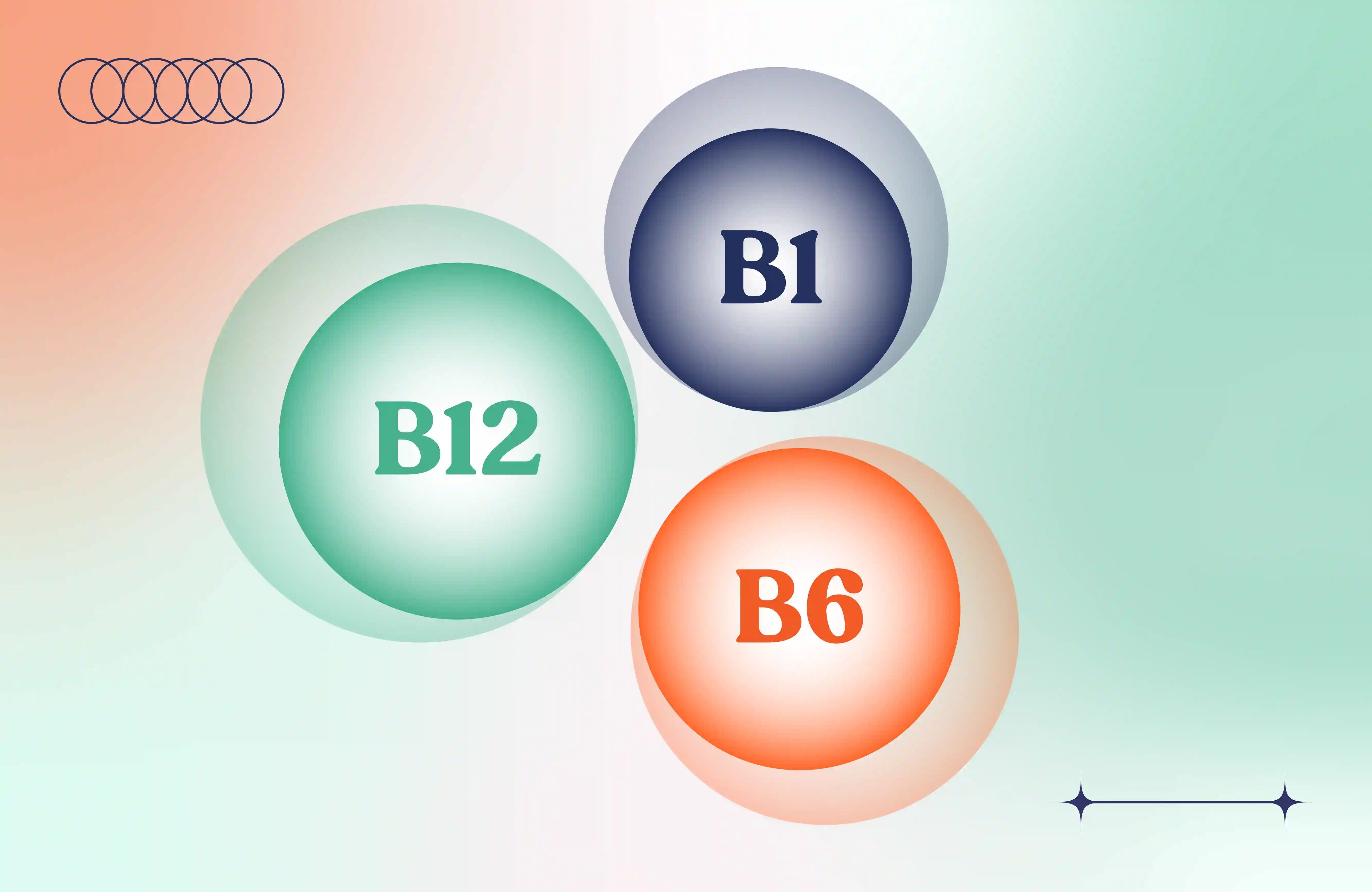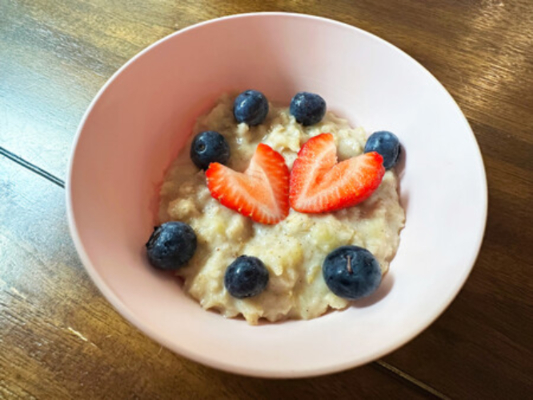This post contains links through which we may earn a small commission should you make a purchase from a brand. This in no way affects our ability to objectively critique the products and brands we review.
What Foods Have Fiber? 20 High-Fiber Foods to Add to Your Diet
Evidence Based Research To fulfill our commitment to bringing our audience accurate and insightful content, our expert writers and medical reviewers rely on carefully curated research.
Read Our Editorial Policy
- The Best High Fiber Foods
- 1. Split Peas
- 2. Lentils
- 3. Black Beans
- 4. Kidney Beans
- 5. Chickpeas
- 6. Great Northern Beans
- 7. Chia Seeds
- 8. Avocado
- 9. Peas
- 10. Bulgur
- 11. Raspberries
- 12. Blackberries
- 13. Coconut
- 14. Pears
- 15. Artichokes
- 16. Quinoa
- 17. Steel-Cut Oatmeal
- 18. Kiwi
- 19. Kale
- 20. Popcorn
- How Much Fiber Should You Eat?
- Fiber Foods FAQs
Fiber is beneficial for so much more than digestion—but most Americans do not nearly get enough of this vital nutrient.
If you’ve been wanting to boost your fiber intake naturally, try adding these fiber-rich foods to your diet today (not all at once, by the way—if so, you might have some uncomfortable symptoms coming your way!).
Meals Made for You
Weekly menu, grocery list, macros—one consult unlocks it all.
Meals Made for You
Weekly menu, grocery list, macros—one consult unlocks it all.

The Best High Fiber Foods
While all plants and plant-derived foods will have fiber in some form, the amount of fiber can vary widely between each one, so we’ve rounded up 20 of the highest-fiber foods out there, along with their typical serving sizes.
*All nutritional information is derived from USDA FoodData Central.1
1. Split Peas
All beans and legumes are rich in fiber, but split peas are an exceptionally good source. When cooked, they contain a whopping 16 grams of fiber per cup.
The recommended daily intake of fiber for adults is 22 to 34 grams (depending on age and sex), so one cup of cooked split peas will provide most people with more than half of their daily needs.
Split peas also contain 16 grams of protein, making them an excellent choice for vegans and vegetarians.
Although split pea soup is the most popular preparation, you could also add them to salads, roast them into a crunchy split pea snack (similar to roasted chickpeas), make a creamy mash, or blend them into hummus or pesto.
Fiber Per Serving: 16g per cup (cooked)
2. Lentils
Lentils are another member of the fiber-rich legume family. When cooked, they contain the same amount of fiber as split peas: about 16 grams per cup (although this can vary depending on the type of lentil).
They have a slight leg up on split peas when it comes to protein, providing almost 18 grams.
One cup of cooked lentils also contains 20% of your daily needs for potassium, 36% of your iron requirements, and more folate than most other plant foods—really, you can’t go wrong with lentils.
The fiber content can vary depending on which type of lentils you choose. French lentils (also known as Le Puy lentils) have the most fiber per gram, followed by red, black beluga, brown, yellow, and green. However, any lentil you choose is a healthy and nutritious option.
Fiber Per Serving: ~16g per cup (cooked)
3. Black Beans
Another fiber-rich member of the legume family, black beans contain about 15 grams per cup when cooked.
Black beans are also very versatile—often one of the only beans featured in breakfast (like Southwest-style scrambles) and dinner recipes alike.
Like all legumes, black beans contain soluble fiber—the type that dissolves in water and promotes cardiovascular and metabolic health.2
Plus, black beans contain loads of antioxidants, including polyphenols called anthocyanins (the same type found in blackberries, blueberries, and other deep blue, purple, or black plant foods).3
Fiber Per Serving: 15g per cup (cooked)
4. Kidney Beans
Kidney beans contain just over 13 grams of fiber per cup, which is still over half of most people’s daily fiber requirements.
They also provide 15 grams of plant-based protein per cup and are rich in the antioxidants rutin, gallic acid, and tocopherol (a form of vitamin E).4
Kidney beans are excellent for soups and stews, as they hold up well when cooked for long periods of time.
Fiber Per Serving: 13.1g per cup (cooked)
5. Chickpeas
Also known as garbanzo beans, chickpeas are a versatile legume widely used in Mediterranean, Middle Eastern, and Indian cuisines.
Chickpeas made their way into American kitchens in the past decade or so, in large part due to the popularization of hummus as a dip and snack food.
With 12.5 grams of fiber per cup, chickpeas are an excellent choice for topping a salad, adding to curries, or roasting in the oven for a crunchy snack.
Fiber Per Serving: 12.5g per cup (cooked)
6. Great Northern Beans
Great northern beans are a type of medium-sized white bean (similar to the cannellini bean) with a creamy and delicate texture.
In case you’re curious, their name comes from the Great Northern Railway, a now-defunct railroad that originally distributed these beans across the United States.
Great northern beans are delicious in soups, stews, casseroles, and chilis—use them in any recipe that calls for white beans, navy beans, or cannellini beans.
Before we move on from the legume family, we’ll note that all other beans also contain good amounts of fiber, including pinto beans, lima beans, white beans, and navy beans.
Fiber Per Serving: 12.4g per cup (cooked)
7. Chia Seeds
Any 90s kid knows that chia seeds were once only used to grow chia pets on your parent’s windowsill—but they’re best known now for their nutritional value.
With almost 10 grams of fiber per ounce (approximately 2 tablespoons), chia seeds are a powerhouse of fiber, plant-based protein, and the omega-3 fat, alpha-linolenic acid (ALA).
If you’ve ever made chia pudding, you know how much liquid chia seeds can absorb, which is due to their stellar soluble fiber content. They also contain mucilage, a fiber that provides that gooey-like texture when chia seeds absorb liquids.
Fiber Per Serving: 9.75g per 1oz
8. Avocado
Best known for their starring role in guacamole and millennial-beloved avocado toast, these fatty fruits also have impressive nutritional stats.
Each medium-sized avocado contains over 9 grams of fiber, less than 1 gram of sugar, and 21 grams of mostly unsaturated fat, making them a nutritious, heart-healthy, and filling choice.
Plus, avocadoes contain vitamin E, magnesium, and the antioxidants lutein and zeaxanthin, which benefit vision and brain health.5
Fiber Per Serving: 9.3g per 1 medium avocado
9. Peas
Although peas are a much-hated food in the 5-and-under crowd, they are packed with fiber and other nutrients.
Green peas provide almost 9 grams of fiber per cup, in addition to 96% of your daily vitamin C requirements, almost 8 grams of protein, magnesium, iron, and the antioxidants lutein and zeaxanthin.
While you could certainly just eat green peas plain as a side dish, other options include blending them into a pea pesto or garlicky pasta sauce, adding them to soup, or topping a spring salad with freshly shelled green peas.
Fiber Per Serving: 8.8g per 1 cup (cooked)

10. Bulgur
A staple food in Mediterranean and Middle Eastern cuisine, bulgur is a whole grain with some of the highest fiber content.
Bulgur is considered an ancient grain, as its use dates back thousands of years to what is now Turkey.
Although there’s no technical definition, ancient grains are those that have remained largely unchanged in terms of how they’re grown over the last several hundred years (i.e., not genetically modified or “bred,” like wheat).
Bulgur is a quicker-cooking form of whole wheat (so it’s not safe for gluten-free folks) with a nutty flavor and coarse texture. You can also find finely ground bulgur, which is often used in breakfast porridge or tabouleh salad.
Fiber Per Serving: 8.2g per cup (cooked)
11. Raspberries
Raspberries are well-known in the nutrition world for their fantastic fiber content.
At 8 grams per cup, no other fruit (other than avocado, which, yes, is technically a fruit) packs as much fiber.
Plus, raspberries are also low in sugar, high in vitamin C, and potent sources of heart-healthy and cancer-fighting antioxidants like quercetin, anthocyanins, and ellagic acid.6
Fiber Per Serving: 8g per cup
12. Blackberries
Not far off raspberry’s tail, blackberries are also an excellent source of fiber, with 7.6 grams per cup.
Their deep purple hue tells us that blackberries are loaded with anthocyanins, and they also contain vitamin C, magnesium, and a bit of iron.
In herbal medicine, the entire blackberry plant has traditionally been used to treat diarrhea and other digestive problems, which may be due to its antimicrobial, antioxidant, and anti-inflammatory properties.7
Fiber Per Serving: 7.6g per 1 cup
13. Coconut
Fresh coconut meat is a very nutritious food, providing fiber, vitamins, minerals, and healthy fats called medium-chain triglycerides.
Shredded or flaked coconut meat contains over 7 grams of fiber per cup, which is primarily insoluble fiber—the kind that helps food and waste move through your system and promotes healthy bowel movements.
Coconut is also high in manganese, selenium, and copper, which is unique for a fruit.
Fiber Per Serving: 7.2g per 1 cup (shredded raw coconut)
14. Pears
Pears are an underrated fruit, providing over 7 grams of fiber per large fruit and tons of flavor (when in season, that is).
While you can certainly munch on a pear for a sweet snack, pears also hold up well when baked (just slice them in half and bake them with a bit of brown sugar), making for a tasty dessert that gets deliciously caramelized.
However, pears are higher in sugar, with 22 grams in a large one. Unsurprisingly, the less-sweet Asian pears have about 3 grams less sugar per fruit than Barlett pears, plus 2 grams more fiber.
Fiber Per Serving: 7.1g per large pear
15. Artichokes
Artichokes are one of those foods that make you wonder who figured out how to eat them, as they certainly aren’t ones you just pick up and take a bite out of.
Whoever it was, we’re grateful, as artichokes are one of the tastier vegetables out there (when dipped in garlicky butter, of course).
Artichokes contain almost 7 grams of fiber in each, which can be found in both the edible base of the petals and the inner hearts.
Fiber Per Serving: 6.8g per 1 medium artichoke
16. Quinoa
Though technically a seed, quinoa is considered a whole grain.
Quinoa is also an ancient grain that has been a staple food for the Aztecs, Incas, and other South Americans for thousands of years.
Although it doesn’t have as much fiber as bulgur, one cup of cooked quinoa still provides over 5 grams of fiber, plus 8 grams of complete protein. Complete proteins are unique in the plant-based world, as most vegan protein sources are incomplete (meaning they do not contain all nine essential amino acids).
Fiber Per Serving: 5.2g per 1 cup (cooked)
17. Steel-Cut Oatmeal
Steel-cut oatmeal is a denser, nuttier, less processed form of oats (compared to rolled oats, quick oats, or old-fashioned oats).
They contain double the fiber content of the other types of oats, which helps lower their glycemic index and reduce their impact on blood sugar.
Keep in mind that they also take longer to cook—you’ll need about 30 minutes on the stovetop!
Fiber Per Serving: 5g per ¼ cup (dry/uncooked steel-cut oats)
18. Kiwi
Kiwi contains about 2 grams of fiber per small fruit, with a typical serving size being two kiwifruit.
The fiber in kiwis is about one-third soluble and two-thirds insoluble, and they are also loaded with vitamin C—just one small kiwi contains 71–85% of an adult’s daily vitamin C needs.
However, kiwis are a bit high in sugar, with 12 grams in two small fruits.
Fiber Per Serving: 4.1g per 2 small kiwifruits
19. Kale
Anyone who’s chomped through a hearty kale salad can intuit that this vegetable contains fiber.
It’s no surprise that kale has reached superfood status, with its plethora of antioxidants, vitamin C, vitamin K, magnesium, calcium, iron, and beta-carotene.
As the fiber content of 1.5 cups of raw kale is just over 4 grams, cooking it down and eating double or triple that amount can help you meet your daily fiber goals.
Fiber Per Serving: 4.1g per 100g (about 1.5 cups of raw kale)
20. Popcorn
Many people are surprised to hear that popcorn is a fiber-rich whole grain with plenty of health benefits (well, not so much movie popcorn).
Air-popped popcorn contains about 3.5 grams of fiber per 3 cups—not a ton, but it still can help you get on your way to your daily fiber intake.
When air-popped or popped at home on your stovetop with some oil or butter, popcorn remains a healthy snack—it’s the type that’s doused with artificial ”butter” and salt that will negate most of its health benefits.
Fiber Per Serving: 3.5g per 3 cups (air-popped popcorn)
How Much Fiber Should You Eat?
The USDA Dietary Guidelines for Americans (DGA) recommend that adult women eat 22-28 grams of fiber per day and men consume 28-34 grams.8
However, it differs quite a bit by age group and sex:
| Population | Recommended Grams of Fiber Per Day |
| Children age 2-3 | 14g |
| Girls age 4-8 | 17g |
| Boys age 4-8 | 20g |
| Girls age 9-13 | 22g |
| Boys age 9-13 | 25g |
| Girls age 14-18 | 25g |
| Boys age 14-18 | 31g |
| Women age 19-30 | 28g |
| Men age 19-30 | 34g |
| Women age 31-50 | 25g |
| Men age 31-50 | 31g |
| Women age 51+ | 22g |
| Men age 51+ | 28g |
Another similar recommendation from the Academy of Nutrition and Dietetics is to consume 14 grams of dietary fiber per 1,000 calories. For example, someone eating a 2,000-calorie diet should aim for 28 grams of fiber daily.9
Fiber Foods FAQs
What food has the highest fiber of all?
Split peas, lentils, and beans are particularly high in fiber. One cup of cooked split peas contains 16g of fiber per cup, 1 cup of cooked lentils contains 15.6g, and 1 cup of black beans contains 15.4g per cup.
All plant foods contain some fiber, with higher amounts found in beans, legumes, and whole grains. Nuts and seeds also contain plenty of fiber per gram, but their serving size is much smaller than other high-fiber foods, making their overall fiber content about 2 to 3 grams per typical 1-ounce serving.
Are bananas high in fiber?
Although all plant foods have some fiber, bananas are not particularly high in it. A medium 7-inch banana contains 3.1 grams of fiber. Plus, they are one of the highest-sugar fruits.
Do any meats have fiber?
No, only plant foods have fiber, so meat, eggs, poultry, and dairy have zero fiber.
What fruit has the most fiber and least sugar?
If we’re talking botanically, avocados are the fruit with the most fiber and the least amount of sugar (9g fiber and 0.4g sugar per avocado). However, if you mean more of a “fruit fruit,” then raspberries (8g fiber and 5g sugar per cup) and blackberries (7.6g fiber and 7g sugar per cup) are the fruits that are higher in fiber and lower in sugar.
Why should you eat more fiber?
Fiber has many health benefits, and most Americans’ dietary fiber intake is incredibly low. Eating adequate amounts of fiber can improve digestion and bowel health (including reducing constipation and diarrhea) and reduce the risk of colorectal cancer, heart disease, type 2 diabetes, high blood sugar, and other cardiovascular or metabolic disorders.
- USDA Agriculture Research Service. FoodData Central. https://fdc.nal.usda.gov/index.html
- Barber, T. M., Kabisch, S., Pfeiffer, A. F. H., & Weickert, M. O. (2020). The Health Benefits of Dietary Fibre. Nutrients, 12(10), 3209. https://doi.org/10.3390/nu12103209
- Damián-Medina, K., Milenkovic, D., Salinas-Moreno, Y., Corral-Jara, K. F., Figueroa-Yáñez, L., Marino-Marmolejo, E., & Lugo-Cervantes, E. (2022). Anthocyanin-rich extract from black beans exerts anti-diabetic effects in rats through a multi-genomic mode of action in adipose tissue. Frontiers in nutrition, 9, 1019259. https://doi.org/10.3389/fnut.2022.1019259
- Kan, L., Nie, S., Hu, J., Wang, S., Cui, S. W., Li, Y., Xu, S., Wu, Y., Wang, J., Bai, Z., & Xie, M. (2017). Nutrients, phytochemicals and antioxidant activities of 26 kidney bean cultivars. Food and chemical toxicology : an international journal published for the British Industrial Biological Research Association, 108(Pt B), 467–477. https://doi.org/10.1016/j.fct.2016.09.007
- Scott, T. M., Rasmussen, H. M., Chen, O., & Johnson, E. J. (2017). Avocado Consumption Increases Macular Pigment Density in Older Adults: A Randomized, Controlled Trial. Nutrients, 9(9), 919. https://doi.org/10.3390/nu9090919
- Burton-Freeman, B. M., Sandhu, A. K., & Edirisinghe, I. (2016). Red Raspberries and Their Bioactive Polyphenols: Cardiometabolic and Neuronal Health Links. Advances in nutrition (Bethesda, Md.), 7(1), 44–65. https://doi.org/10.3945/an.115.009639
- Verma, R., Gangrade, T., Punasiya, R., & Ghulaxe, C. (2014). Rubus fruticosus (blackberry) use as an herbal medicine. Pharmacognosy reviews, 8(16), 101–104. https://doi.org/10.4103/0973-7847.134239
- U.S. Department of Agriculture and U.S. Department of Health and Human Services. Dietary Guidelines for Americans, 2020-2025. 9th Edition. December 2020. Accessed at https://www.dietaryguidelines.gov/sites/default/files/2021-03/Dietary_Guidelines_for_Americans-2020-2025.pdf
- Dahl, W. J., & Stewart, M. L. (2015). Position of the Academy of Nutrition and Dietetics: Health Implications of Dietary Fiber. Journal of the Academy of Nutrition and Dietetics, 115(11), 1861–1870. https://doi.org/10.1016/j.jand.2015.09.003








